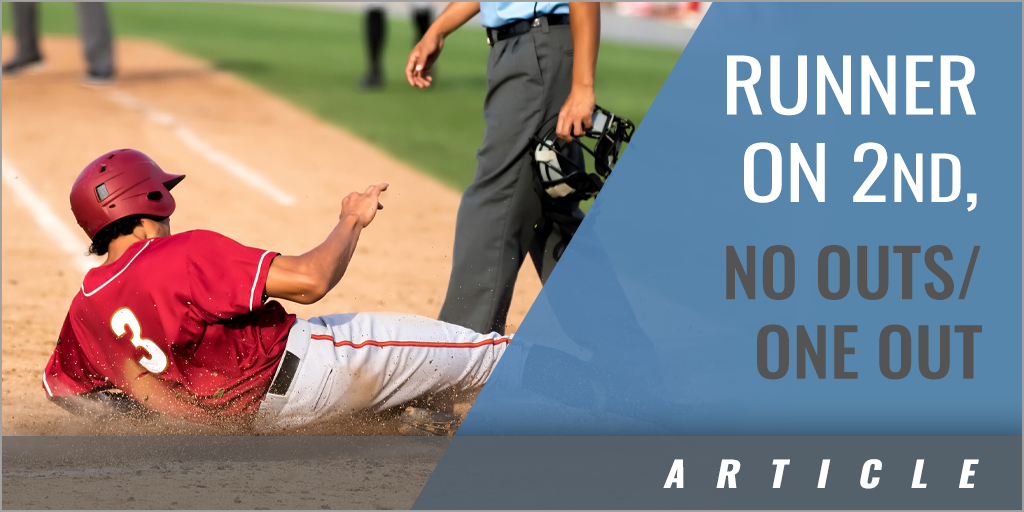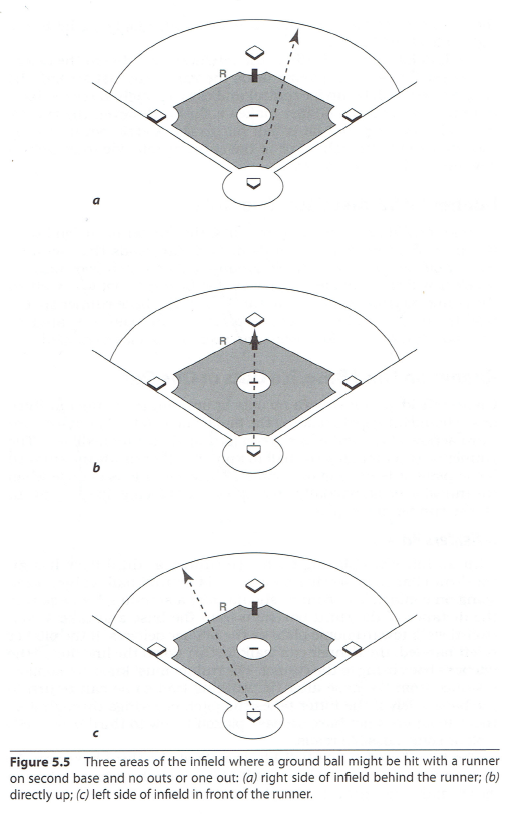|
By: Mike Roberts Originally Published in: Baserunning Provided by: Human Kinetics With an infield grounder, no outs or one out, and a runner on second base, the runner should anticipate reading the ball (white) off the bat to three areas of the infield before committing to movement toward third base. The baseball could be hit behind the runner on the right side of the infield, directly up the middle, or in front of the runner on the left side of the infield (see figure 5.5). Seeing the ball off the bat well is important after the runner has visualized where the ball might be hit. The runner is not guessing but is coached to look (visualize) for the ball to be hit on the left side of the infield (to the runner's right side). In his reaction process, the runner knows if the ball is hit to his right, he will not proceed to third base unless he advances after the ball is thrown across the infield or the ball at the last second scoots off a glove or is mishandled by the defender. By looking for the ball to come off the bat to the runner's right side, the runner normally will visually read the baseball more clearly and stay at second base. The concept of looking for the baseball on the right side of the runner and the left side of the infield is a change from what I first learned. As a young baseball player I was taught to look for the ball on the right side of the infield. However, as I began coaching, I found it was easier for the runner to advance from second if he looked for the hit to the left side of the infield. I taught my runners to look to their right side and the left side of the infield to read the baseball. This cut down on baserunning mistakes on a ball hit in the infield.
If the ball is hit behind the runner and far enough away from the pitcher to be fielded by the first or second baseman, the runner can delay his reaction slightly and still advance to third base. Therefore, there is little need for a runner to focus on the ball being hit to the right side of the infield. The ball hit up the middle is the toughest read due to the defensive possibilities. If the pitcher fields the ball at the last second, the runner must still be under control and close enough to second base to return safely if the pitcher makes a throw. However, the runner must also be prepared for a ball hit up the middle not fielded by the pitcher but still behind or to the runner's left side to be able to advance to third base safely. |








